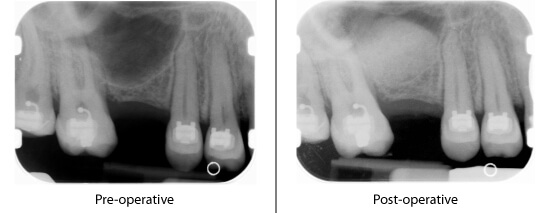Dental implant surgery in the posterior maxilla requires consideration of anatomic factors. Due to reduced bone quality of this region, tooth loss results in a resorbtion of bone and a pneumatized maxillary sinus. When <5mm of residual bone remains between the alveolar crest and maxillary sinus, often a lateral window sinus lift is warranted.
This approach to increasing bone available for placing implants uses a window in the lateral bony wall of the maxillary sinus to gain access to the underlying Schneiderian membrane. Although implant survival rates associated with this procedure routinely exceed 90%, the lateral window sinus lift remains a technique sensitive procedrue due to the high risk of Schneiderian membrane perforation (research shows 11-56%) and hemorrhagic complications, the latter of which is associated with the inadvertent laceration of the intrasosseous arterial supply to this region.
The recent incorporation of piezoelectric technology when performing a lateral window elevation is one way to potentially reduce or eliminate many of the complications associated with the procedure. In contrast to using burs to prepare the window, piezoelectric surgery does not cut soft tissues, and therefore reduces the risk of Schneiderian membrane perforation. It uses technology which produces microvibrations that cut bone while leaving soft tissue intact.
A recent article in the Journal of Periodontology, using piezoelectric technology for lateral window sinus lifts showed a perforation rate of 3.6%.
Piezoelectric technology, in combination with microscope enhanced vision, illumination and microsurgical techniques, leads to a further reduction in perforation rates, surgical complications, pain and swelling.
The photographs show a patient of record who has severe pnematization of the maxillary sinus and little bone remaining for implant placement. There is also minimal interradicular space to create a window into the sinus cavity.

